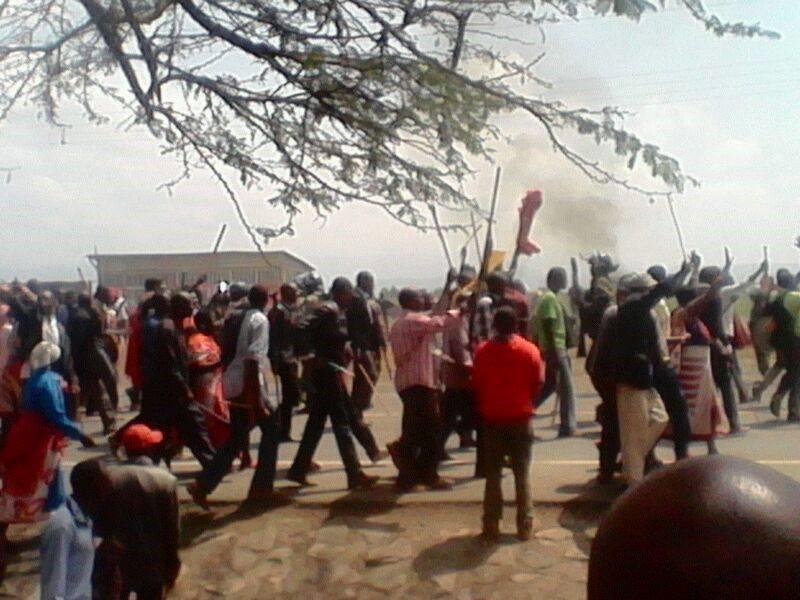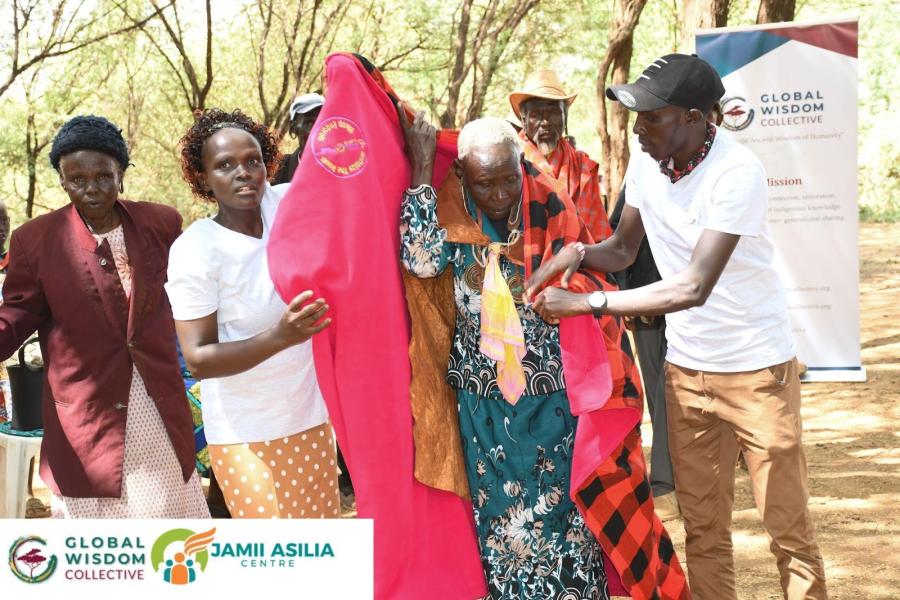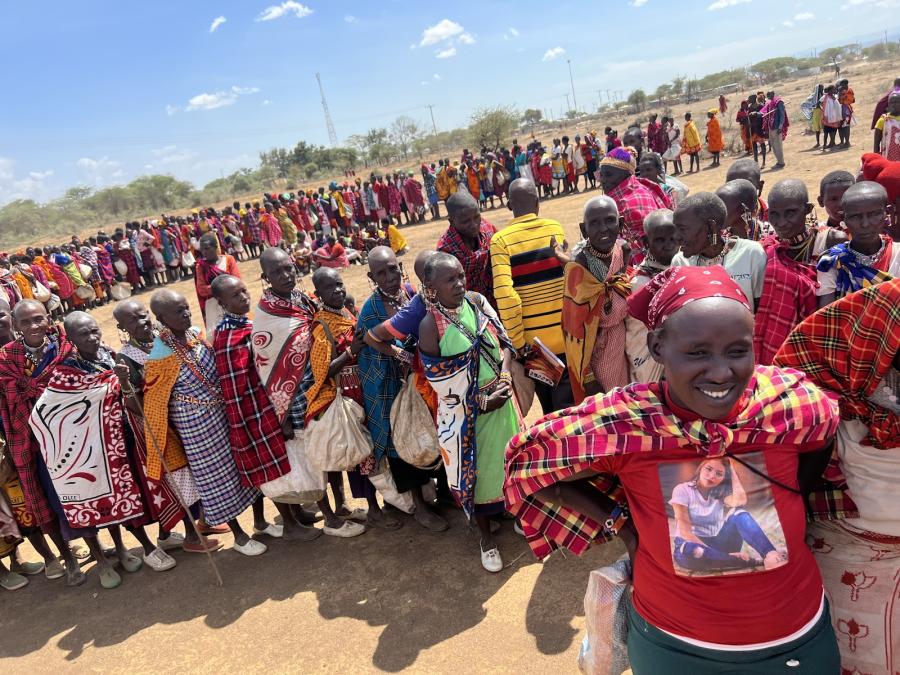
By Ben Ole Koissaba, PhD Student, Institute on Family and Neighborhood Life, Clemson University, South Carolina
In comparison to other sources of energy like coal and oil, geothermal energy is generally considered environmentally friendly. Even though there are a few polluting aspects of harnessing geothermal energy[1]. Perhaps this is the reason the Kenya Government has embarked on a major explatory process in the Rift Valley to harness the potential of massive deposits. The prospects from south to north are Lake Magadi, Suswa, Longonot, Olkaria, Eburru, Badlands, Menengai, Arus Bogoria, Lake Baringo,Korosi, Paka, Silali, Emuruangogolak, Namarunu and Barrier[2].
The geothermal potential of the Kenya Rift Valley was recognized in the mid-1950s. In 1956, two wells were drilled at Olkaria about 10 km west of Longonot. With promising results the UNDP and the Kenya Power and Lighting Co. carried out an extensive exploration program in the Rift Valley in 1970. This survey identified Olkaria as the best candidate for exploratory drilling[3]. By 1976, six deep wells had been drilled and the first 15 MW generating unit was commissioned at Olkaria in 1981.
Apparently, one of the greatest undoing of the projects is the lack of consultation of the local Pastoralist Maasai communities that live of the land that historically belonged to them. According to local elders, ever since the beginning of the exploration processes, they have continually been forced to move to adjacent lands only for them to be moved when a new project phase is initiated. This is done without due consideration that the land is their only habitat and resource and that every move impacted directly on their survival as it reduced grazing land for their livestock which is their mainstay. The plight of the Maasai in the region was also in jeopardy by the annexation of land to create the Hells Gate National Park which was established in 1984 through executive orders where an American Power Company Orpower was given concessions by the government to drill wells and generate power. Many Maasai families were forced to move to give room for its creation without any compensation whatsoever. As noted by a letter of complaint from Nature Kenya, KenGen has violated Clean Mechanisms principles through the clearance of vegetation, pollution and erosion which has led to loss of about 32 KM2. of wildlife habitat[4].
Surprisingly and in disregards f all safeguards and the impacts the geothermal expansion projects have in the lives of the local Maasai community multinationals have continued to fund such projects. DEG – Deutsche Investitions- und Entwicklungsgesellschaft mbH together with KfW Entwicklungsbank (KfW Development Bank), provides Orpower 4 Inc. (Orpower), the owner and operator of the Olkaria III geothermal power plant in Kenya, with a long-term loan to the amount of 40 million US-dollars[5]. Recently Overseas Private Investment Corporation (OPIC) the US Government’s development finance institution gave Kenya $ 310 million to increase the generating capacity of the Orpower IV geothermal plant from 48 megawatts to 100 megawatts[6]. The World Bank reports that it has invested $409 million in geothermal development since 2007; in 2013 it announced plans to raise another $500 million for geothermal projects in the Rift Valley and other parts of the world. None of this budget has been allocated to fairly compensate the Maasai community, whose land has been usurped to make room for the projects, and where such compensation is done, KenGen has resorted to use certain gatekeepers who get rewards from the company such as lucrative security, transport, tokens. The evictions violate international human rights law, including the UN Declaration on the Rights of Indigenous Peoples, ILO Convention 169, and the African Charter on Human and Peoples’ Rights.
In the most recent past, the Kenya Government has continued to appropriate land within the greater floor of the Rift Valley by awarding concessions to various multi -national companies to further explore and extract geothermal energy. Africa Geothermal International Limited, WalAm Geopower Inc and local companies that are associated with the leading political elites Marine Power and Akira are among those that have been given the concessions in disregard of all required safeguards, international human rights statutes and the constitution of Kenya. All the companies are past the initial surface exploration and matter of fact have mobilized equipment and personnel to the sites. This has not gone down well with the Maasai community who claim aboriginal rights of ownership of the land and have cases dating back to early 1913 on the said lands which are also an issues that has had prominence in the Truth Justice and Commission which the president has apparently declined to make public. The issues that the Maasai and other Indigenous People in Kenya have equally taken center stage in the National Land Commission which is being starved of funding by government.
Furthermore, geothermal resources in Olkaria have been exploited with no regard for the health or environment of the local communities. Despite being touted as a green energy, KenGen’s Environmental and Social Impact Assessment shows that geothermal power plants release certain pollutants into the environment including noise pollution, hydrogen sulphide gas, and trace metals like boron, arsenic, and mercury. Toxic wastes from the power station in Naivasha have been emitted into the air and disposed in local waterways in violation of applicable international environmental standards.
Despite these hazards, KenGen failed to conduct adequate consultation with the local community, which first expressed its dismay at the assessment in 2012. The Maasai have not been able to raise money to conduct an independent study on the harmful effects of the plant, but have noted increase of gastronomic and skin diseases, stillbirths in cattle, premature death of livestock, and increased rate of premature delivery in pregnant women. The company’s environmental impact assessment notes potential health risks associated with the plant and recommends safe distances in the Narok district. However, since there was no effective consultation with community members, people were never informed of these health risks.
Going by recent events in Narasha and lately in Suswa where the Maasai have held demonstration against the expansion of the geothermal projects without due diligence and lack of consultation and compensation which has often been accompanied by state sponsored forceful evictions, there need for not only local solutions but a solutions that require all multinational financiers to re-examine terms and conditions for financing such projects that subject massive populations to evictions, loss of lives and properties. The area is important to the Maasai both for its history and their dependency on the land for their livelihoods and culture. Mt. Longonot is central to the Maasai religious and traditional practices, and further dispossession will separate the community from historical prayer sites, places of ritual, and other cultural ceremonies. These sites were used regularly for local ceremonies, and annually for cultural festivities involving Maasai from the whole region.
The Maasai have resorted to the courts to stop further evictions, arguing that the government of Kenya is in violation of international law by forcibly and continually removing them from their ancestral lands around Mt. Longonot in the Naivasha Administrative Districts and the Narok North Administrative Districts within the Rift Valley Province, without proper prior consultation or adequate compensation[7]. The Maasai seek compensation for past evictions, and assurance against potential future evictions, by provision of alternative land. Evictions for the next stage of geothermal development would displace over 3,500 families, removing them from the communities’ two churches and Maasai cultural center, and would take over 1,000 children out of school in Narasha and Olomayiana. They are also demanding the government and the multinational conduct direct consultations as opposed to the current trend where a few selected individuals are corruptly rewarded to sign on behalf of the whole community.
According to the local communities--who claim ancestry to the land and have filed cases in Kenyan courts-- African Geothermal International (AGIL) and Marine Power along with Akira I and Akira II have disregarded court injunctions instituted by the Maasai, proceeding to deploy their heavy machinery to their proposed project sites without due diligence or consultations with the local communities. The concession areas, which cover hundreds of thousands of acres, are home to thousands of Maasai pastoralists[8].
The communities feel that their rights have been grossly violated because each of the companies have failed to adhere to the Maasai Bio-cultural Community Protocol, which was developed in line with the UNEP model and based on the Convention on Biological Diversity, that require all external actors to respect Indigenous Peoples’ customary laws, values and decision making processes; particularly those concerning stewardship of their territories and lands.
The companies have also disregarded a current dispute between Kedong Ranch Ltd and the Maasai community along with key provisions from the Constitution of Kenya (2010). Article 40 of the Constitution provides for the protection of the right to property (of any kind) without discrimination and just, prompt and full compensation where acquisition is of national interest. The right to a clean and healthy environment is equally guaranteed under Article 42 in addition to the right to a cultural heritage.
It is the expectation of the Maasai that the government of the Republic of Kenya being a signatory to the United Nations Declaration on Human Rights, International Covenant on Economic, Social and Cultural Rights, and having provisions in the Kenya Constitution 2010 that protects the rights of its citizens; that the rights to life and property of the Maasai will be safeguarded. Kenya should recognize the indigenous pastoralist tribes' right to free, prior and informed consent regarding any infrastructure or development project that would affect their lands, natural resources, property, cultural expression, and sacred sites; as well as require all development projects, including the road construction, oil and geothermal exploration and exploitation, and tourism development projects underway or planned meet the highest international standards and best practices in regard to their environmental and social impacts.
To forestall future conflicts, the Maasai recommend the following:
- That the government should stop operating with impunity and in disregard of the law and contrary to the provisions of the Kenyan constitution and other International human and people’s rights instruments
- That the current deployment of armed police to enforce the evictions of Maasai communities be stopped immediately.
- That the companies mentioned be held in contempt for disregarding court orders.
- That plans for compensation be put in place, including a clear and documented plan on access to benefit sharing be put in place to ensure the affected families’ livelihoods are sustained.
- That the following international donors and companies be held accountable for losses suffered by the Maasai and demand that they put in place safeguards and develop consultative and inclusive forum with the Indigenous inhabitants of the land:
Sinopec-China
KEC-India
Hyundai-South Korea
Toshiba, Toyota, Tsusho, and JICA-Japan
AGIL
Marine Power
- That other bilateral donors that support the projects being undertaken hold consultative meetings with the Maasai community before any further investments are made.
- That the current ESIA reports which excluded livestock, homes and cultural rights should not be used and instead a team that includes Indigenous People be reconstituted to undertake another Environmental and Social Impact Assessment.
- That the selective and non-consultative process of compensation process that is currently being used by KenGen should be transparent and that all deserving community members be treated equally and in consultation on the Identification of suitability of alternative resettlements to their pastoralist life
See links for related stories:
Transport On Mai Mahiu-Narok Road Paralyzed On Wednesday As Residents Protest Over Land Grabbing
Residents of Suswa trading center protest against land grabbing by the government
Maasai in Kenya Go to Courts to Stop Evictions Caused by World Bank's Geothermal Power Project
Forceful Evictions of Maasai from Narasha: A Recipe for Tribal Clashes in Kenya
President Uhuru and Vice-President Ruto Forestall Escalation of Maasai/Kikuyu Conflict in Kenya
[1] Energy Informative 2004
[2] Simiyu, M.S (2008). Status of geothermal exploration in Kenya and future plans for its development. UN University
[3] Kenneth B. A. & Greg U. (2011). Geothermal resource assessment for Mt Longonot, central rift valley, Kenya. Proceedings, Kenya Geothermal Conference
[4] See letter to the Director General National Environmental Management Authority.
[5] See DEG/KfW Olkaria III Geothermal Power Station (Kenya)
[6] See LXRICHTER under by region Africa, Projects. November 2011
[7] See Kedong case reference No.CC NO 21 of 2010 High Court Nakuru
[8] Ibid



